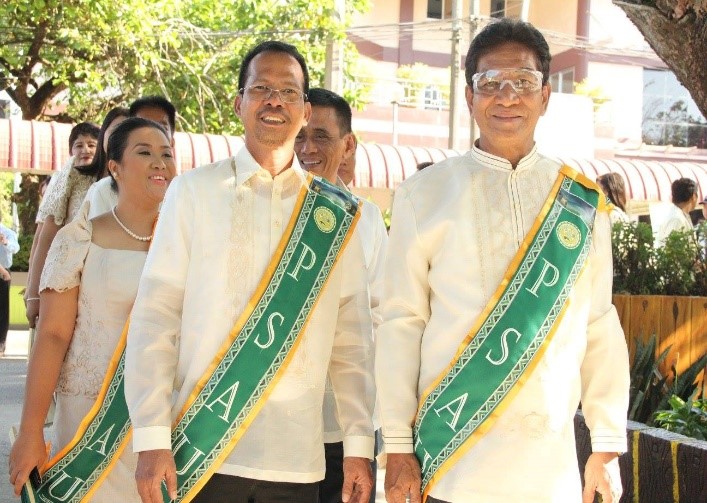
History of BRRDC

shoot production such as: Giant, Kawayang Bayog, Tinik, Giant bugo, Iron and Oldham Bamboo. Seven (7) species for wood alternative: Pole Vault, Bikal, Kiling, Solid, Black and Yellow Bamboo. Seven Ornamental Bamboo species: Wamin, Yellow buho, Budha’s Belly, Buho, Hedge, Running and Long pipe Bamboo. A total of twenty (20) bamboo species were collected and are planted on the 2011 established Bambusetum funded by the Department of Agriculture – Bureau of Agrarian Research.
Dr. Tarun Directorship ended in 2012 and is Replaced by Dr. Virgilio Bagunu. Dr. Bagunu assumes the office from 2012 to 2014. Dr. Bagunu shortly was replaced by Prof. Joel Q. Maliwat in 2014. Prof Maliwat, the 3rd Bamboo Director was able to collect six (6) ornamental Bamboo species: Malaysian Taiwan, Malayan, Japanese, Bush, and Taiwan Bamboo. In Prof. Maliwat’s Directorship,


The Pampanga State Agricultural University (PSAU) managed the Bamboo and Rattan RDE Center under the Research and Development Office. The Center was established in 2019 but operated in 2005 as Bamboo Nursery. Under the supervision of Dr. Carmelito B. Tarun, the Bamboo Nursery was established. Dr. Tarun was able to collect six (6) bamboo species for Bamboo


together with the PSAU Administration established the Bamboo and Rattan research & Development and Extension Office (BRRDEC). The BRRDEC construction was funded by the DOST-PCCARD and was tuned over in January 2019. To date, forester Allain James T. Aquino, assumes the Directorship from October 2022 to present. Forester Aquino is a Faculty from the Department of Forestry and Agroforestry (DFAF). As early as its 5th month. Forester Aquino was able to register and enroll the Center for ISO.
The Center was founded to meet the needs of various clienteles through Research, Extension and trainings, particularly those who use bamboo for making furniture, homes, and other. Through the production and sale of propagules of various bamboo species, this Center seeks to increase bamboo production and its ability to generate income. It has 26 different varieties of bamboo propagules produced, including some indigenous to the Philippines.
